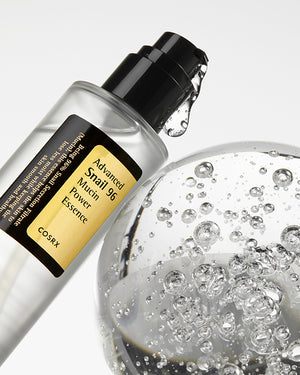The Real Reasons Behind Scalp Changes (Part II)
Like the skin, the scalp is easily affected and changed by the environment around it. Among these, airborne pollutants, prolonged UV exposure, and sudden changes in weather can disrupt the fragile scalp barrier, making it more vulnerable to various concerns.

|1. Environmental pollution - a hidden cause of scalp issues
Did you know that environmental pollution can cause hair loss? Among all parts of the body, the scalp and hair are particularly prone to accumulating impurities such as fine dust and heavy metals in the air. One past study found that the concentration of impurities on the scalp and hair was 1.5 to 2 times higher than in the air.
When these impurities continue to accumulate, they can severely damage the scalp, triggering itchiness and inflammation. Fine dust, especially when it's very small, can penetrate the scalp barrier and be absorbed into hair follicle cells. This initiates oxidative stress, which attacks the follicles and leads to hair loss. It can also be absorbed into the hair itself, making it dull and stiff.
So, should we wash our hair frequently to remove these impurities? While cleansing away existing pollutants is certainly important, it is better in the long run to strengthen the scalp’s own defense system. By nourishing the scalp and hair with healthy ingredients, you can build a strong barrier that prevents pollutant penetration.
|2. Excessive UV exposure
Sunlight helps produce vitamin D, which plays a vital role in scalp health. However, excessive exposure to sunlight can be harmful, as UV rays can create a harsh environment for the scalp. This is because it is not fully protected from UV rays, even if the scalp is shielded by a good defense, hair.
The main reason prolonged UV exposure negatively affects the scalp is oxidative stress. UV rays generate excess active oxygen, which can damage not only scalp skin cells but also hair follicles. This damage may not be immediately visible, but over time, accumulated UV exposure can accelerate scalp aging and cause premature hair shedding.
On days with strong sunlight, try to avoid direct UV exposure as much as possible and keep your scalp well-hydrated to prevent aging. Supplying the scalp with appropriate antioxidants helps prevent the attack of oxidative stress and protect the scalp.
|3. Sudden seasonal change
If you’ve ever experienced sudden scalp itchiness or dryness, it’s likely due to the change of seasons. During dry winters with cold winds, moisture is easily lost from the scalp, aggravating scalp conditions. In contrast, hot and humid summer weather increases the secretion of sebum and sweat. Since the scalp is covered with hair, it lacks ventilation and can create a favorable environment where microorganisms can proliferate.
Scalp disorders actually follow seasonal patterns. Dandruff and seborrheic scalp tend to worsen in winter, while temporary seasonal hair loss often begins in autumn after the scalp endures the harsh summer.
Check your scalp care routine according to the changing environment. Use lighter products that remove sebum and impurities in summer and moisturizing products to help maintain the scalp’s balance in winter.
Beyond what we’ve covered, many other factors can affect the scalp. Stress, hormonal changes after childbirth, and habits like wearing hijabs or hats can also change the environment on the scalp. While it's hard to control every factor, the easiest first step is keeping the scalp clean and well-nourished. Remember, small habits can lead to a healthier scalp.
Reference
Hair Ther Transplant, 5(133), 2. (2015)
Scientific reports, 13(1), 11797. (2023)










